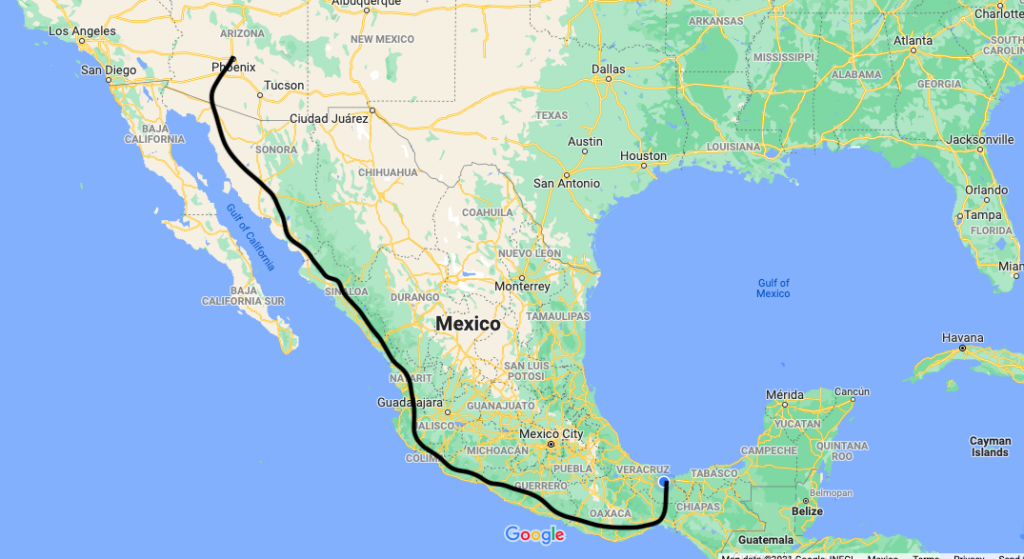Have you ever wondered why we celebrate December 25 as Jesus’ birthday? Me neither, but for those who have, here’s a brief explanation. Historically, mid winter festivals have been celebrated for millennia. The Romans also adopted these traditions. Beginning around 500 BC, Saturnalia, as it was called, was an ancient Roman festival and holiday in honor of the god Saturn, held on 17 December of the Julian calendar and later expanded with festivities through to 23 December. It was a time of feasting, singing (often while drunk and naked), exchanging gifts, gambling, and partying.
In the 100s AD, and especially with the emperor Aurelian, the Romans began to embrace eastern cults. In particular Sol Invictus, the feast of the unconquered sun. Sol Invictus celebrates the solstice, December 21, where the sun begins to take back the day. Over the years this eventually drifted to December 25. Around 330 AD the emperor Constantine converted the empire to Christianity. Church leaders tried to discourage the old pagan rituals but were unsuccessful so they just co-opted them by making December 25 the birth date of Jesus. The Bible does not specify Jesus’ birthday, so why not? That way people could be persuaded to believe they were not celebrating Sol Invictus, but the birth of Jesus. The strategy worked; by 400 AD Dec. 25 was solely celebrated as Christmas.
I learned all this through a podcast by Mike Duncan called the History of Rome. I highly recommend it.
https://thehistoryofrome.typepad.com/the history of rome/
Back on the road, since last post I’ve taken more buses but also I’ve been pedaling more. I made my way along the Costa Chica to Juchitan, where I turned north and headed for the Gulf coast. Here’s a few more beach photos from near Acapulco.
This is actually a photo from 2018 where I stayed at a beach bungalow in Pie de la Cuesta. I found the same place again last week and stayed there again. It was just as great as I remember. Cheap, nobody around, the beach right there, warm and relaxing in a hammock.
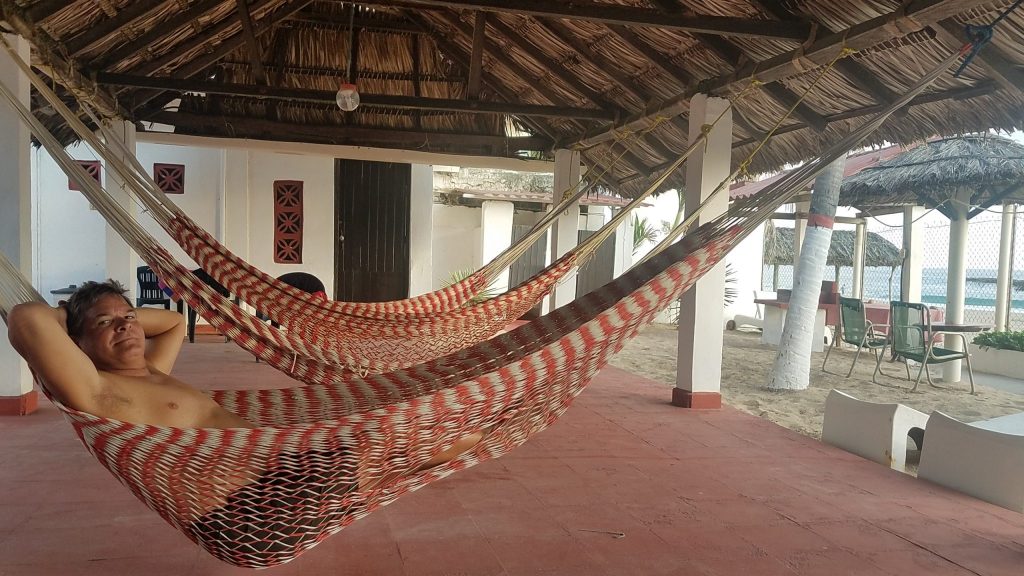
Typical beach dinner–oysters and shrimp cocktail.
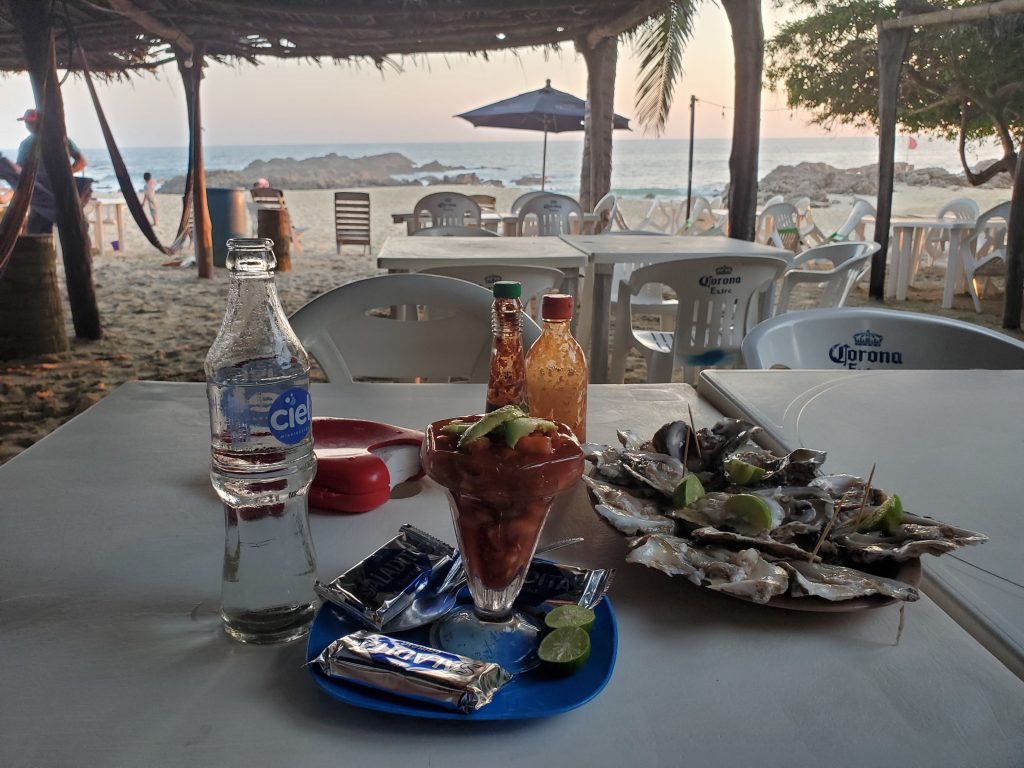
Another sunset photo.
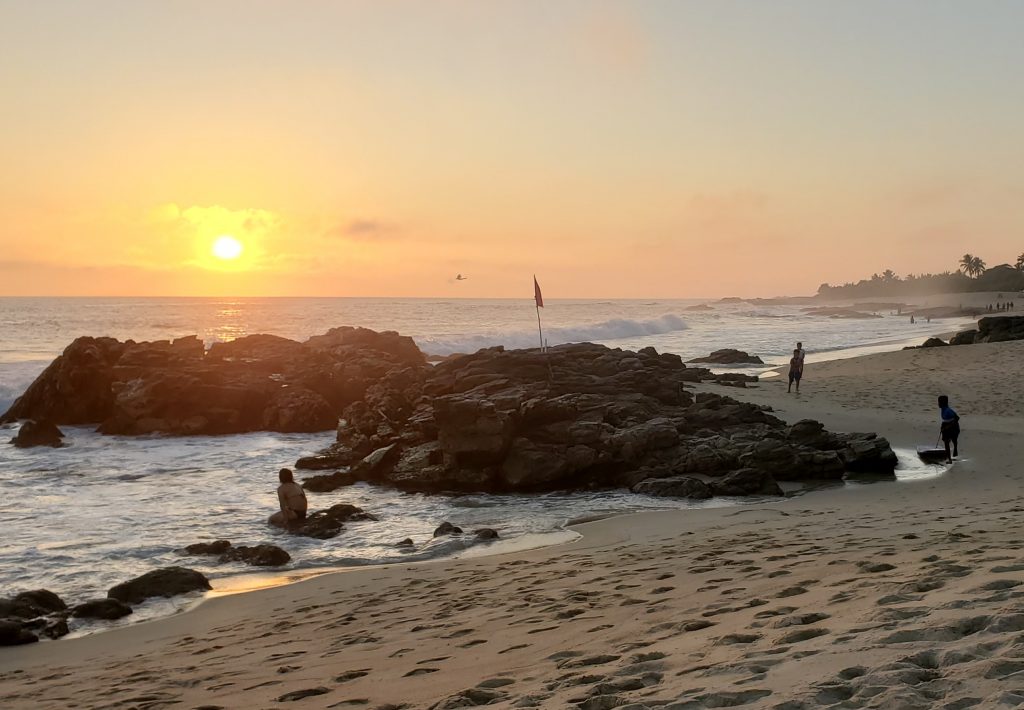
There’s no snow here but the Mexicans still love their snowmen.
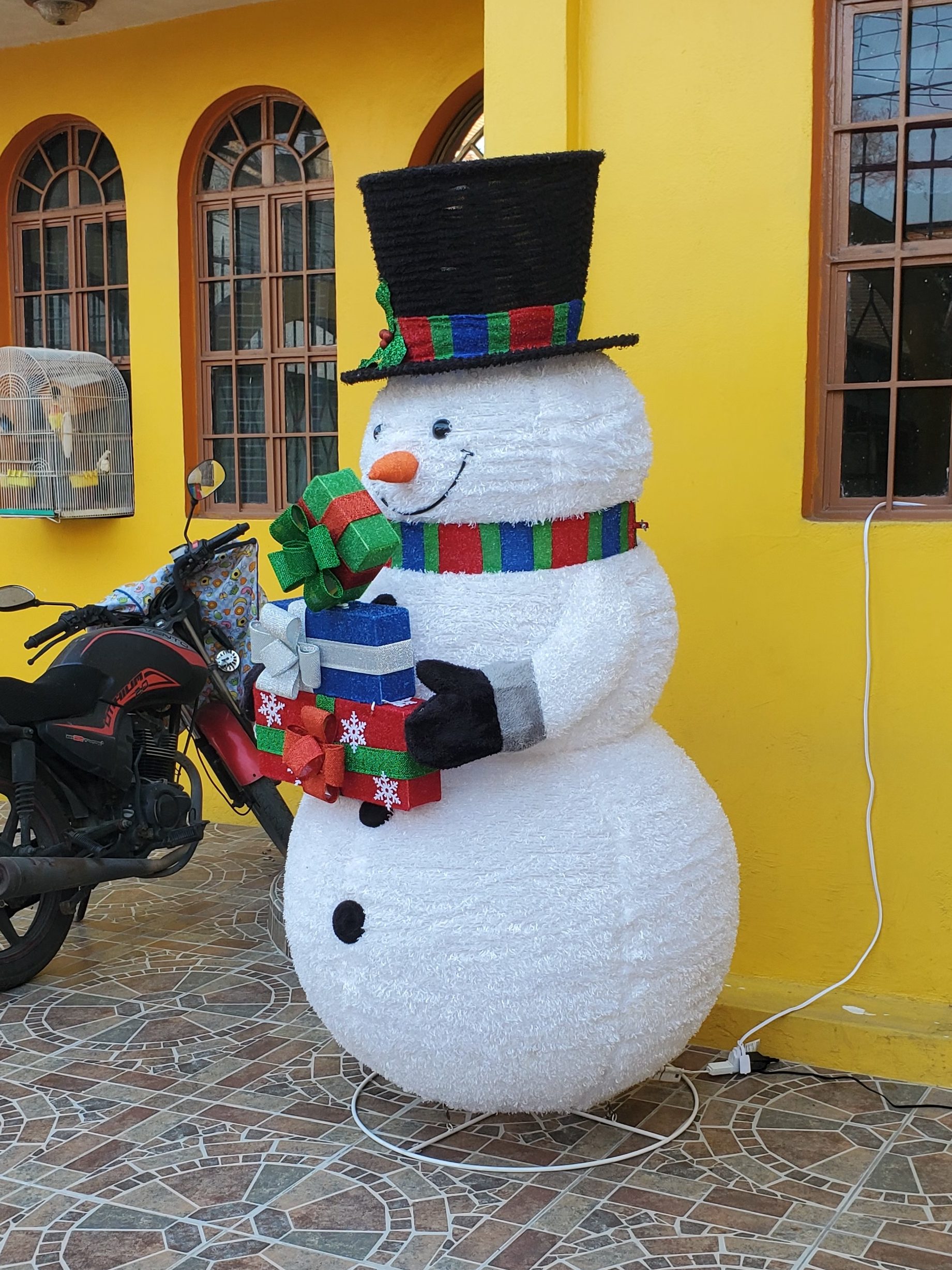
Just outside of Salina Cruz I met a couple bike tourists from Germany, Denis and Anika. They have been cycling an amazing 2 1/2 years. They started in Europe then came through central America on their way to the USA and Canada. Incredible. They have a facebook page and podcast, much of it in German.
https://ostwaerts-nach-westen.de/
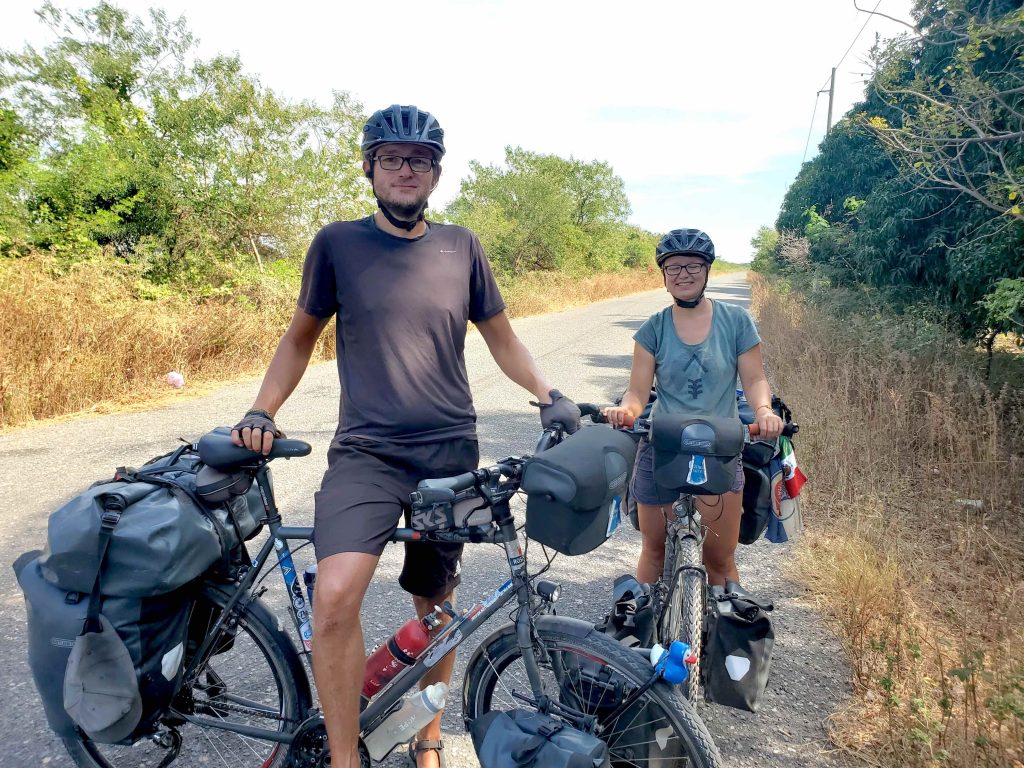
Just as in many countries, the cuisine of Mexico varies somewhat by state. Oaxaca is known for its coffee, cacao and something called a tlayuda. A tlayuda is a handmade dish in traditional Oaxacan cuisine, consisting of a large, thin, crunchy, partially fried or toasted tortilla covered with a spread of refried beans, asiento, lettuce or cabbage, avocado, meat, Oaxaca cheese, and salsa. In the city of Juchitan, in southern Oaxaca I found a tlayuda restaurant. Here are the ladies assembling the tlayudas.

Then this guy cooks them on a grill.
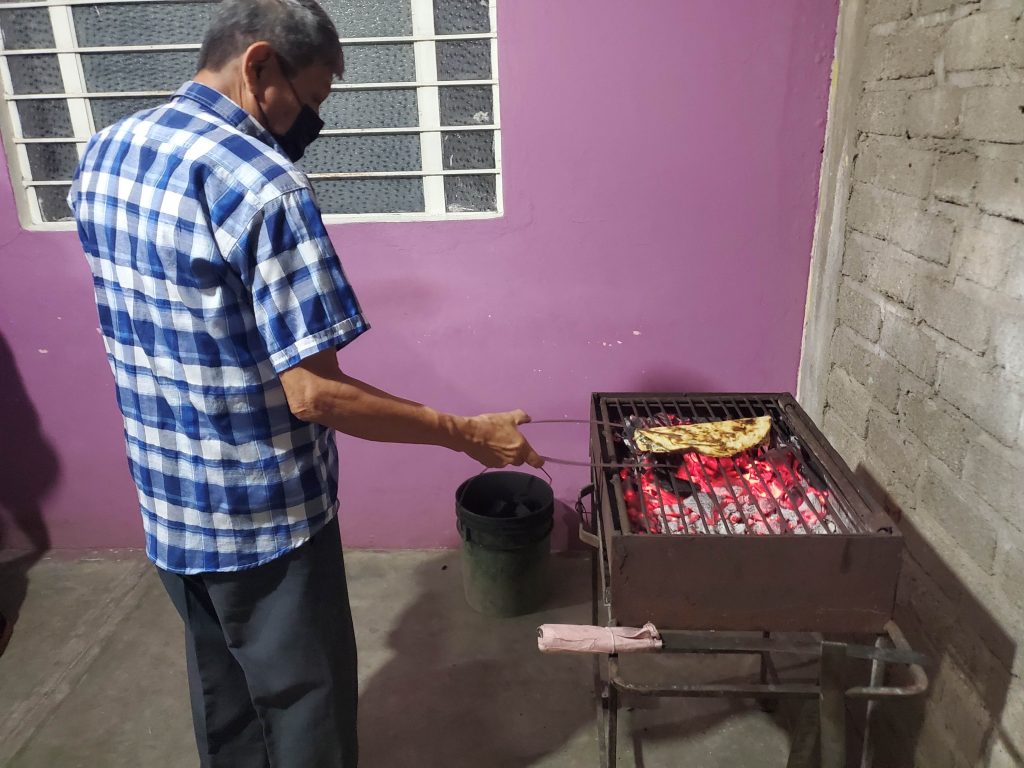
Then this guy eats them with a weird crazy look on his face. I was so hungry.

The day I took this photo was a tough one. There was a 20 mph headwind most of the afternoon and I ran out of water. I was so tired I could hardly pedal. I finally had to filter irrigation water from a ditch in order to continue. It ended up being a 7 hour day, even though I only pedaled about 45 km. That’s why I look a little crazy.
Finally, while I am on the topic of podcasts, I just listened again to a great one about the conquest of Mexico in 1521 by Hernán Cortés, a Spanish conquistador. It’s an amazing story that I did not know very well. Cortes was one of the luckiest guys on earth. He only succeeded through a number of sheer coincidences. But he was a brilliant politician and strategist, as well as insanely brave. Through these skills he was able to convince a number of indigenous tribes to join him in fighting the Mexica (pronounced meh-shee-ka), the dominant culture in the area. The was not difficult to do as the Mexica were known for their tyranny and blood lust. they sacrificed thousands to their gods by ripping out the hearts of their victims. So many of their neighbors were only too willing to join the Spanish to get even.
But Cortes’ legal justification for being there was questionable, and the governor of Cuba kept sending soldiers over to arrest him. But his charm and charisma allowed him to convince the new soldiers to join him, further strengthening his army. One ship brought a man infected with smallpox. Although it was a serious illness, the Spansh had built up some immunity over the generations so it was not a complete killer for them. But once it infected the indigenous population it wiped then out by the thousands, as they had no immunity at all to it.
So that’s how Cortes and 1000 Spanish managed to defeat 100,000 Mexicas—by convincing tens of of thousands of other tribes to join him, by convincing soldiers sent to arrest him to join his cause, and a virus. If you want to hear more the podcast is by Daniele Bolelli.
That’s it for now. I am currently in Minatitlan, Veracruz state. I will finish in Merida by January 15. Happy Holidays everyone!
